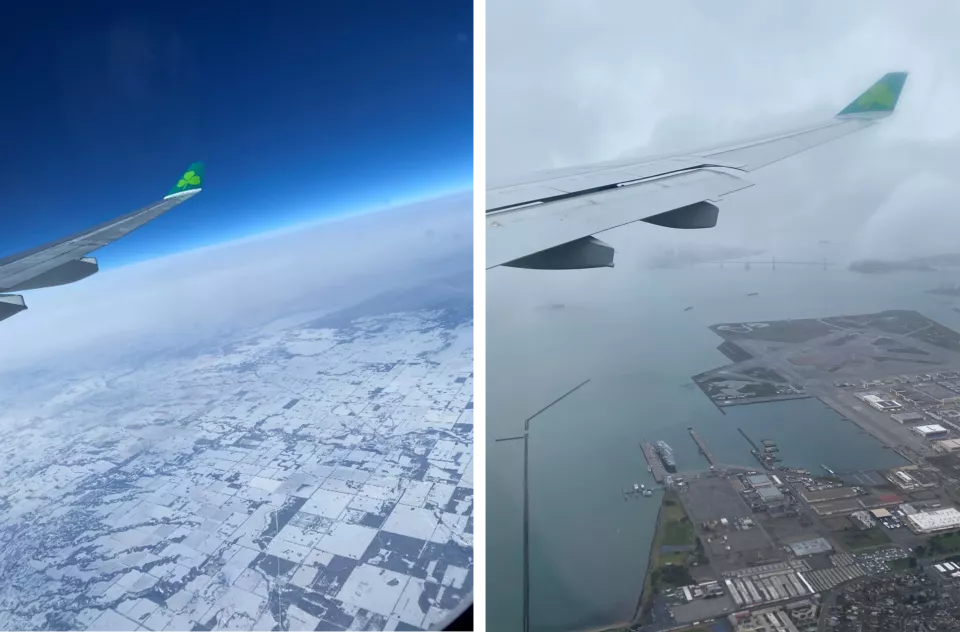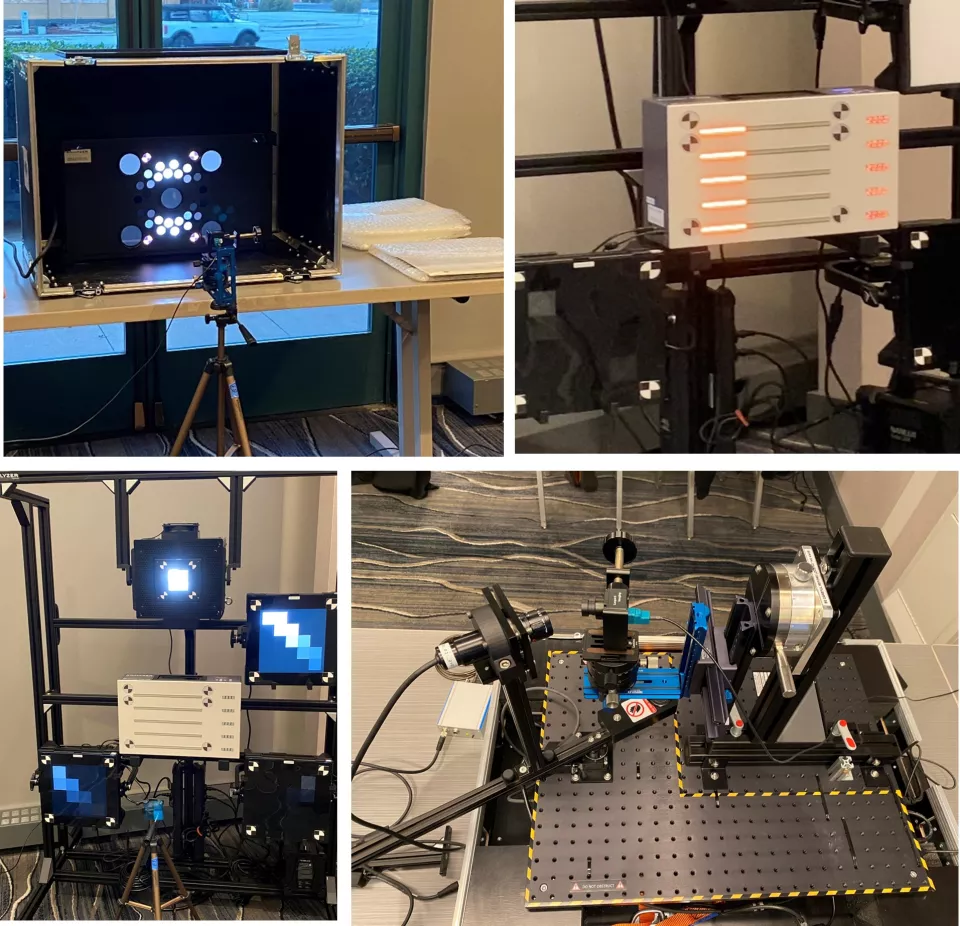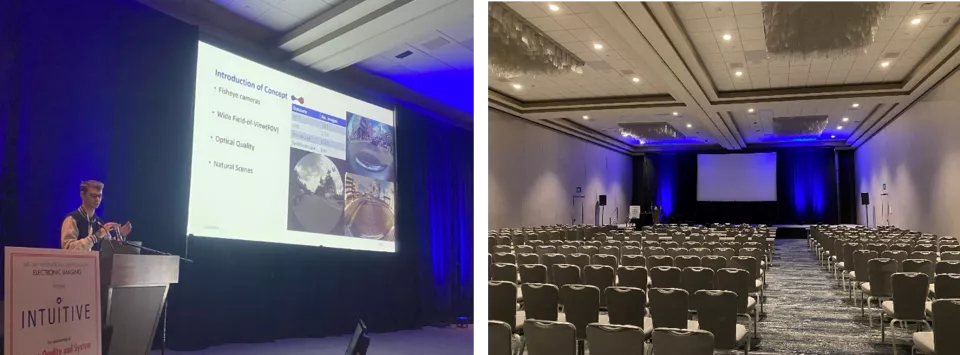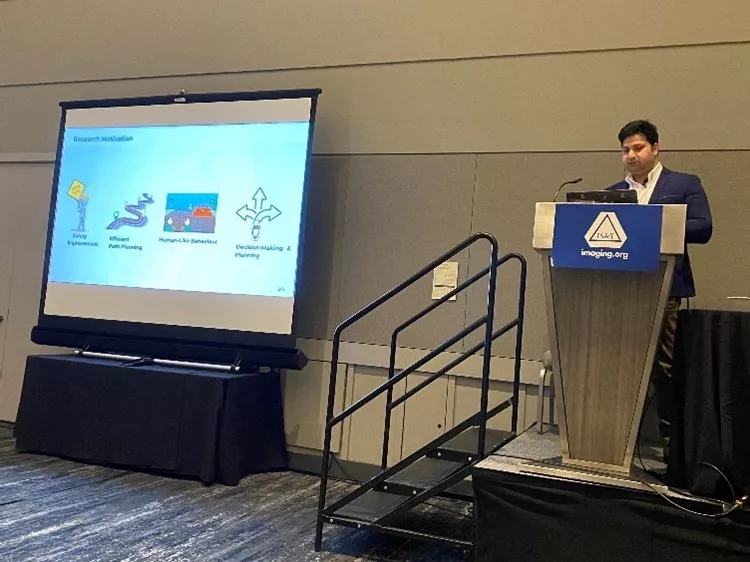
On the 20th of January 2024, as part of the Electronic and Computer Engineering (ECE) Department for the University of Limerick, we were delighted to depart from Dublin Airport on a journey to the 36th Edition of the Electronic Imaging Conference 2024 located in Burlingame, San Francisco, California. This conference is one of the most popular in terms of Image Quality and Image Processing which covers a vast array of applications including security, virtual reality, machine vision, and data analysis, among others. Some of the greatest minds gather to discuss the latest research breakthroughs of the 21st century.

Daniel Jakab, a 2nd Year PhD student, had an incredible opportunity to attend two Short Courses offered by Electronic Imaging. The first course was called “Image Quality Foundations: Standards for Mobile, Automotive, and Machine Vision Applications” presented by Dr Peter D. Burns, Managing Director of Burns Digital Imaging (formed in 2011) and Don Williams, Consultant of Image Science Associates. We discussed various industrial applications of Image Quality Measurement techniques from color and test charts to imaging standards published by ISO and the Automotive IEEE P2020 Working Group (formed in 2016). The second course was called “Hands-on Practice with Automotive Image Quality Measurements” by Dr Laurent Chanas, Image Quality Expert and Product Owner of DXOMARK Image Labs, an Independent French technology company assessing smartphones, cameras, and lenses since 2008. This course gave a hands-on laboratory experience of how cameras are measured and assessed given various imaging conditions such as Light Emitting Diode (LED) Flicker, Dynamic Range, Noise, Lens Flare, and Image Sharpness measured by Spatial Frequency Response Slanted Edge Targets. Below is shown a visual setup of four camera test modules which are available on the DXOMARK website: Automotive - DXOMARK - Excellence On Your Service

Daniel Jakab also presented “Measuring Natural Scenes SFR of Automotive Fisheye Cameras” at the Autonomous Vehicles and Machines (AVM) and Image Quality and System Performance session for Quality Measurement of Automotive Sensors chaired by Dr Patrick Denny, Associate Professor in Artificial Intelligence, Imaging and Industry Expert in Automotive Imaging (University of Limerick) and Dr Elaine Jin, Principal Hardware Engineer of Camera Systems at Rivian. Please see the official publication of this work in the Image Science and Technology (IS&T) library (10.2352/EI.2024.36.17.AVM-109). This work would not have been possible without Dr Eoin Martino Grua (University of Limerick), Dr Brian Michael Deegan (University of Galway), Dr Anthony Scanlan (University of Limerick), Dr Pepijn Van De Ven (University of Limerick) and Dr Ciarán Eising (University of Limerick). This work was supported, in part, by the Science Foundation Ireland grant 13/RC/2094 P2 and co-funded under the European Regional Development Fund through the Southern & Eastern Regional Operational Programme to Lero - the Science Foundation Ireland Research Centre for Software (www.lero.ie) and sponsorship from Valeo Vision Systems. We would like to thank Dr Oliver van Zwanenberg for assisting in this research for Automotive Fisheye Cameras.

Sushil Sharma, a 3rd Year PhD student presented “Optimizing Ego Vehicle Trajectory Prediction: The Graph Enhancement Approach” at the Autonomous Vehicles and Machines (AVM) session for Leveraging Bird's Eye View Imagery for Safe Driving chaired by Dr Patrick Denny, Associate Professor in Artificial Intelligence, Imaging and Industry Expert in Automotive Imaging (University of Limerick) and Dr Peter van Beek, Artificial Intelligence Algorithms Engineer at Intel Corporation. Please see the official publication of this work in the Image Science and Technology (IS&T) library (10.2352/EI.2024.36.17.AVM-115). This work would not have been possible without Aryan Singh (University of Limerick), Dr Ganesh Sistu (University of Limerick), Dr Mark Halton (University of Limerick) and Dr Ciarán Eising (University of Limerick). This publication has emanated from research supported in part by a grant from Science Foundation Ireland and sponsorship under Grant number 18/CRT/6049.
